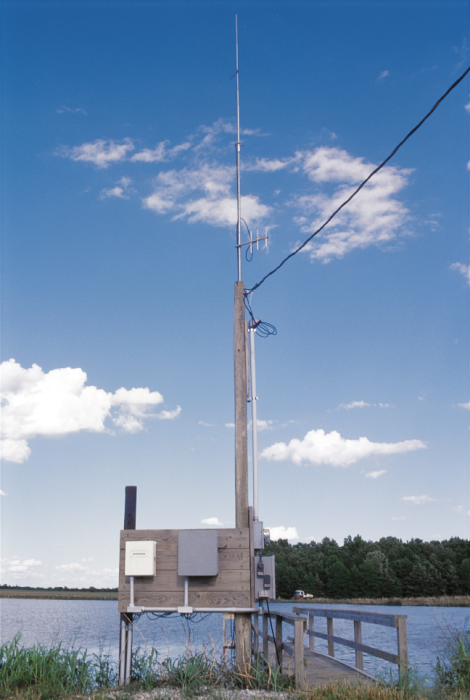


Successful aquaculture ultimately hinges on concentrations of dissolved oxygen. Measurement of DO is the single most important water-quality parameter. It is also the reason many aquaculturists are forced to make several pond checks a night. Without close, continuous monitoring, the necessary warnings that help avoid fish stress and mortality might go undetected—causing an entire production cycle to go belly up.
That’s why, in May of 1996, Levi Lee and his son Jeff turned to Campbell Scientific for help. They purchased a CR10X Measurement and Control System for use on their multiple-pond catfish farm in Macon, Mississippi. Knowing all too well the demands several pond checks a night make on individuals, as well as entire aquaculture operations, the Lees now are able to check and control their ponds making only one stop: at their personal computer. And, if critically low dissolved-oxygen conditions should occur—in any of their ponds—a radio-controlled alarm alerts the Lees through the same computer, saving them precious time and sleep. It also allows them to take fast, informed, restorative action.
The initial installation consists of two stations, both featuring a CR10X datalogger for measurement and control decisions, an SDM-CD16AC for controlling ac power to aerators, and radios for wireless telemetry. The first station measures an OxyGuard DO probe in each of four ponds and water temperature in one of those ponds using a Campbell Scientific 107-L sensor. The second station monitors dissolved oxygen in five ponds, again using OxyGuard DO probes.
Both of the stations are housed in 12 by 14 in. fiberglass enclosures equipped with a special two-line, 40-character LED display that allows dissolved oxygen conditions to be viewed at the site. In addition to monitoring, the dataloggers are programmed to control paddle-wheel aerators, set in motion to remedy low pond oxygen. Alarm conditions are triggered when DO dips below user-determined levels, sending a warning sound back to the operator.
The CR10Xs are equipped with the Modbus operating system to drive the two stations, allowing data to be continuously monitored from the base computer running InTouch software. The Lees are afforded additional control through useful, intensive graphics made possible by InTouch. The dataloggers communicate with the computer using convenient, wireless RF telemetry. (Editor’s note: Also popular are phone calls made to a pager, or voice-synthesized calls received at home or office.)
Pleased with the many advantages the initial system offered, the Lees augmented their operations by adding and instrumenting two ponds in 1999. In addition, they installed yet another CR10X, this time adding electrical current monitoring. Now the Lees can monitor the amperage drawn from the paddle wheel motors; if too high, they know a motor needs to be shut down and serviced.
With the upgrade to their monitoring and control system, the Lees also took the opportunity to modify datalogger programming and can now create different alarm and control set points for morning and evening operation (knowing that aquatic-plant life becomes oxygen-consuming rather than oxygen-producing during darkness, so that a low-oxygen event just after sunset is far more critical than one just before sunrise).
An additional benefit is that the CR10Xs allow data to be collected over extended periods, painting a useful picture of pond conditions over time. That, in turn, leads to better pond management.
Case Study Summary
Application
Maintaining optimal DO levels in catfish ponds with an automated monitoring and control systemLocation
Macon, Mississippi, USAProducts Used
107 SDM-CD16ACAParticipating Organisations
Levi Lee and Jeff Lee, Lee's Catfish FarmMeasured Parameters
Dissolved oxygen, water temperature, amperageControlled Devices
Paddle-wheel aerators, alarmsView the PDF